 W
WAesthetics, or esthetics, is a branch of philosophy that deals with the nature of beauty and taste, as well as the philosophy of art. It examines aesthetic values often expressed through judgments of taste.
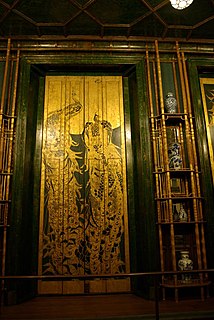 W
WAestheticism was an art movement, both practical and theoretical, of the late 19th century which emphasized the aesthetic value and effect— in preference to the socio-political themes and positions— of literature, fine art, music and other arts. This meant that the art of the movement was produced with a view toward being beautiful first and foremost, rather than serving a moral, allegorical, doctrinal or other such purpose — "art for art's sake". It was particularly prominent in England during the late 19th century, supported by notable writers such as Walter Pater and Oscar Wilde, having started in a small way in the 1860s in the studios and houses of a radical group of artists and designers, including William Morris and Dante Gabriel Rossetti, reformers who explored new ways of living in defiance of the design standards of the age as revealed in the 1851 Great Exhibition at Hyde Park, London. Flourishing in the 1870s and 1880s, critic Walter Hamilton was the first writer to name the movement, publishing The Aesthetic Movement in England in 1882.
 W
WIn aesthetics, the sublime is the quality of greatness, whether physical, moral, intellectual, metaphysical, aesthetic, spiritual, or artistic. The term especially refers to a greatness beyond all possibility of calculation, measurement, or imitation.
 W
WAesthetics were of great importance to much of the ancient world.
 W
WKimberly Kowal Arcand is a data visualizer and science communicator for NASA's Chandra X-ray Observatory. She is also the visualization coordinator for the Aesthetics and Astronomy image response project at the Harvard-Smithsonian Center for Astrophysics located in Cambridge, Massachusetts.
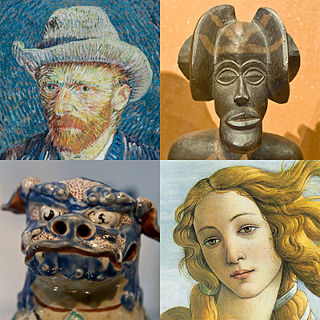 W
WArt is a wide range of human activities that involve creative imagination and an aim to express technical proficiency, beauty, emotional power, or conceptual ideas.
 W
WArt criticism is the discussion or evaluation of visual art. Art critics usually criticize art in the context of aesthetics or the theory of beauty. A goal of art criticism is the pursuit of a rational basis for art appreciation but it is questionable whether such criticism can transcend prevailing socio-political circumstances.
 W
WAn artist is a person engaged in an activity related to creating art, practicing the arts, or demonstrating an art. The common usage in both everyday speech and academic discourse refers to a practitioner in the visual arts only. However, the term is also often used in the entertainment business, especially in a business context, for musicians and other performers. "Artiste" is a variant used in English in this context, but this use has become rare. Use of the term "artist" to describe writers is valid, but less common, and mostly restricted to contexts like used in criticism.
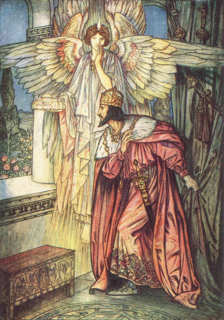 W
WInspiration is an unconscious burst of creativity in a literary, musical, or visual art and other artistic endeavours. The concept has origins in both Hellenism and Hebraism. The Greeks believed that inspiration or "enthusiasm" came from the muses, as well as the gods Apollo and Dionysus. Similarly, in the Ancient Norse religions, inspiration derives from the gods, such as Odin. Inspiration is also a divine matter in Hebrew poetics. In the Book of Amos the prophet speaks of being overwhelmed by God's voice and compelled to speak. In Christianity, inspiration is a gift of the Holy Spirit.
 W
WArtistic merit is the artistic quality or value of any given work of art, music, film, literature, sculpture or painting.
 W
WThe arts are a very wide range of human practices of creative expression, storytelling and cultural participation. They encompass multiple diverse and plural modes of thinking, doing and being, in an extremely broad range of media. Both highly dynamic and a characteristically constant feature of human life, they have developed into innovative, stylized and sometimes intricate forms. This is often achieved through sustained and deliberate study, training and/or theorizing within a particular tradition, across generations and even between civilizations. The arts are a vehicle through which human beings cultivate distinct social, cultural and individual identities, while transmitting values, impressions, judgments, ideas, visions, spiritual meanings, patterns of life and experiences across time and space.
 W
WThe Ashta-Nayika is a collective name for eight types of nayikas or heroines as classified by Bharata in his Sanskrit treatise on performing arts - Natya Shastra. The eight nayikas represent eight different states (avastha) in relationship to her hero or nayaka. As archetypal states of the romantic heroine, it has been used as theme in Indian painting, literature, sculpture as well as Indian classical dance and music.
 W
WAuthenticity is a concept of personality in the fields of psychology, existential psychotherapy, existentialist philosophy, and aesthetics. In existentialism, authenticity is the degree to which a person's actions are congruent with his or her values and desires, despite external pressures to social conformity. The conscious Self comes to terms with the condition of Geworfenheit, of having been thrown into an absurd world not of his or her own making, thereby encountering external forces and influences different from and other than the Self. In human relations, a person’s lack of authenticity is considered bad faith in dealing with other people and with one's self; thus, authenticity is in the instruction of the Oracle of Delphi: “Know thyself.”
 W
WBeauty is commonly described as a feature of objects that makes these objects pleasurable to perceive. Such objects include landscapes, sunsets, humans and works of art. Beauty, together with art and taste, is the main subject of aesthetics, one of the major branches of philosophy. As a positive aesthetic value, it is contrasted with ugliness as its negative counterpart. Along with truth and goodness it is one of the transcendentals, which are often considered the three fundamental concepts of human understanding.
 W
WJohn Milton Cage Jr. was an American composer, music theorist, artist, and philosopher. A pioneer of indeterminacy in music, electroacoustic music, and non-standard use of musical instruments, Cage was one of the leading figures of the post-war avant-garde. Critics have lauded him as one of the most influential composers of the 20th century. He was also instrumental in the development of modern dance, mostly through his association with choreographer Merce Cunningham, who was also Cage's romantic partner for most of their lives.
 W
WChess aesthetics or beauty in chess is generally appreciated by both players and composers. This is evident, for example, in brilliancy prizes awarded to some games in certain tournaments and also in the world of chess composition. There are many books published featuring chess problems or puzzles that emphasize its aesthetic aspect. One of the earliest is from the 9th century AD. Aesthetics in chess can be both a source of pleasure for humans and also instruction, as compositions or games featuring it typically illustrate original ideas or new instantiations of old ones. A good chess problem composer, however, is not necessarily a good player.
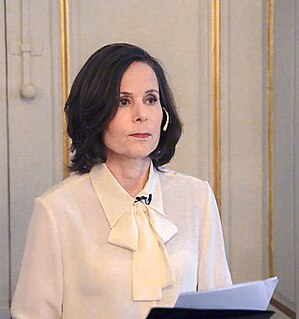 W
WSara Maria Danius was a Swedish literary critic and philosopher, and a scholar of literature and aesthetics. Danius was professor of aesthetics at Södertörn University, docent of literature at Uppsala University and professor in literary science at Stockholm University.
 W
WArthur Coleman Danto was an American art critic, philosopher, and professor at Columbia University. He was best known for having been a long-time art critic for The Nation and for his work in philosophical aesthetics and philosophy of history, though he contributed significantly to a number of fields, including the philosophy of action. His interests included thought, feeling, philosophy of art, theories of representation, philosophical psychology, Hegel's aesthetics, and the philosophers Friedrich Nietzsche and Jean-Paul Sartre.
 W
WErotic art is a broad field of the visual arts including any artistic work intended to evoke erotic arousal, usually depicting human nudity and/or sexual activity. It has included works in almost any visual medium, including drawings, engravings, films, paintings, photographs, and sculptures. Some of the earliest known works of art include erotic themes, which have recurred with varying prominence in different societies throughout history. However it has also been widely considered taboo, with either social norms or laws restricting its creation, distribution, and possession, particularly when it is deemed to be "pornographic", "immoral", or "obscene".
 W
WEscapism is mental diversion from unpleasant or boring aspects of daily life, typically through activities involving imagination or entertainment. Escapism may be used to occupy one's self away from persistent feelings of depression or general sadness.
 W
WEvolutionary aesthetics refers to evolutionary psychology theories in which the basic aesthetic preferences of Homo sapiens are argued to have evolved in order to enhance survival and reproductive success.
 W
WExpression in architecture implies a clear and authentic displaying of the character or personality of an individual (architect). The expression is often identified with the architectural movement of Expressionism, whose main starting point and aim is to present and express what has been "seen" or experienced in the inner eye of the mind, heart and soul, i.e. to express the subjective moods and feelings without referring to conventional and "objective" values, judgements and truths.
 W
WFashion is a form of self-expression and autonomy at a particular period and place and in a specific context, of clothing, footwear, lifestyle, accessories, makeup, hairstyle, and body posture. The term implies a look defined by the fashion industry as that which is trending. Everything that is considered fashion is available and popularized by the fashion system.
 W
WFeng shui, also known as Chinese geomancy, is a pseudoscientific traditional practice originating from ancient China, which claims to use energy forces to harmonize individuals with their surrounding environment. The term 'feng shui' literally translated as "wind-water" in English, is taken from a passage of the now-lost Book of Burial recorded in Guo Pu's commentary.
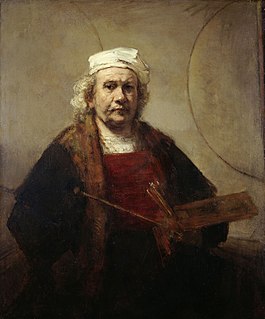 W
WIn European academic traditions, fine art is developed primarily for aesthetics or beauty, distinguishing it from decorative art or applied art, which also has to serve some practical function, such as pottery or most metalwork. In the aesthetic theories developed in the Italian Renaissance, the highest art was that which allowed the full expression and display of the artist's imagination, unrestricted by any of the practical considerations involved in, say, making and decorating a teapot. It was also considered important that making the artwork did not involve dividing the work between different individuals with specialized skills, as might be necessary with a piece of furniture, for example. Even within the fine arts, there was a hierarchy of genres based on the amount of creative imagination required, with history painting placed higher than still life.
 W
WForm follows function is a principle of design associated with late 19th and early 20th century architecture and industrial design in general, which states that the shape of a building or object should primarily relate to its intended function or purpose.
 W
WRichard Buckminster Fuller was an American architect, systems theorist, author, designer, inventor, and futurist. He styled his name as R. Buckminster Fuller in his writings, publishing more than 30 books and coining or popularizing such terms as "Spaceship Earth", "Dymaxion", "ephemeralization", "synergetics", and "tensegrity".
 W
WGerontissa Gavrielia, also known as Mother Gavrielia was a Greek Orthodox nun, known for her care of the poor and sick. She was the second woman to be admitted to a Greek university and was a trained physiotherapist prior to taking up her religious calling at the age of 60.
 W
WA Gesamtkunstwerk is a work of art that makes use of all or many art forms or strives to do so. The term is a German loanword accepted in English as a term in aesthetics.
 W
WThe guqin is a Chinese musical instrument with a long history of being played since ancient times. When the guqin is played, a number of aesthetic elements are involved.
 W
WHuman physical appearance is the outward phenotype or look of human beings.
 W
WIdea art is an art form in which small individual ideas take precedence over grand concepts or ideologies and generic aesthetic, material and disciplinary concerns. The artist works not only like an architect or an engineer, as in the case of conceptual art, but also like a curator or an art writer.
 W
WIn the study of the human mind, intellect refers to and identifies the ability of the mind to reach correct conclusions about what is true and what is false, and about how to solve problems. The term intellect derives from the Ancient Greek philosophy term nous, which translates to the Latin intellectus and into the French and English languages as intelligence. Discussion of the intellect is in two areas of knowledge, wherein the terms intellect and intelligence are related terms.In philosophy, especially in classical and medieval philosophy the intellect (nous) is an important subject connected to the question: How do humans know things? Especially during late antiquity and the Middle Ages, the intellect was proposed as a concept that could reconcile philosophical and scientific understandings of Nature, with monotheistic religious understandings, by making the intellect a link between each human soul, and the divine intellect of the cosmos. During the Latin Middle Ages the distinction developed whereby the term intelligence referred to the incorporeal beings that governed the celestial sphere; see: passive intellect and active intellect. In modern psychology and in neuroscience, the terms intelligence and intellect describe mental abilities that allow people to understand; the distinction is that intellect relates to facts, whereas intelligence relates to feelings.
 W
WKitsch painting is an international movement made up of classical painters, a result of a 24 September 1998 speech and philosophy given by the Norwegian figurative artist, Odd Nerdrum, later clarified in his book On Kitsch with Jan-Ove Tuv and others. The movement incorporates the techniques of the Old Masters with narrative, romanticism, and emotionally charged imagery. The movement defines Kitsch as synonymous with the arts of ancient Rome or the techne of ancient Greece. Kitsch painters embrace kitsch as a positive term not in opposition to "art", but as its own independent superstructure. Kitsch painters assert that Kitsch is not an art movement, but a philosophical movement separate from art. The Kitsch movement has been considered an indirect criticism of the contemporary art world, but according to Nerdrum, this is not the expressed intention.
 W
WLiterary criticism is the study, evaluation, and interpretation of literature. Modern literary criticism is often influenced by literary theory, which is the philosophical discussion of literature's goals and methods. Though the two activities are closely related, literary critics are not always, and have not always been, theorists.
 W
WPhilosophy and literature involves the literary treatment of philosophers and philosophical themes, and the philosophical treatment of issues raised by literature.
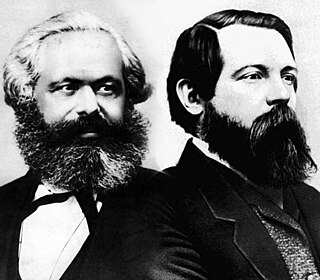 W
WMarxist aesthetics is a theory of aesthetics based on, or derived from, the theories of Karl Marx. It involves a dialectical and materialist, or dialectical materialist, approach to the application of Marxism to the cultural sphere, specifically areas related to taste such as art, beauty, and so forth. Marxists believe that economic and social conditions, and especially the class relations that derive from them, affect every aspect of an individual's life, from religious beliefs to legal systems to cultural frameworks. From one classic Marxist point of view, the role of art is not only to represent such conditions truthfully, but also to seek to improve them ; however, this is a contentious interpretation of the limited but significant writing by Marx and Engels on art and especially on aesthetics. For instance, Nikolay Chernyshevsky, who greatly influenced the art of the early Soviet Union, followed the secular humanism of Ludwig Feuerbach more than he followed Marx.
 W
WMasterpiece, magnum opus or chef-d’œuvre in modern use is a creation that has been given much critical praise, especially one that is considered the greatest work of a person's career or to a work of outstanding creativity, skill, profundity, or workmanship.
 W
WHerbert Marshall McLuhan was a Canadian philosopher, whose work is among the cornerstones of the study of media theory. Born in Edmonton, Alberta, and raised in Winnipeg, Manitoba, McLuhan studied at the University of Manitoba and the University of Cambridge. He began his teaching career as a professor of English at several universities in the United States and Canada before moving to the University of Toronto in 1946, where he remained for the rest of his life.
 W
WMedium essentialism is a philosophical theory stating that each artform has its own distinctive medium, and that the essence of such an artform is dependent on its particular medium. In practice, the theory argues that every artwork should manifest its essential properties, those which no other artform can employ. The theory relies on the presumption that every artform has a unique medium, and is divided into two main interpretations. The ‘limitation’ interpretation of Medium Essentialism argues that, due to their medium, some artforms should be constrained in their aspirations. The ‘productive’ interpretation reasons that a work's medium determines what content or style will function best, and that practitioners should pursue ventures aligning with the nature of this chosen medium. Clement Greenberg is a prolific medium-essentialist in relation to modernist art, proposing that artists such as Jackson Pollock are successful because they properly exploit elements of their chosen medium, such as a painting's physical flatness. However, Medium Essentialism was most propagated by film practitioners throughout the twentieth century, as it legitimised cinema as an artform for the first time. Previously, film had been regarded as merely a recorded representation of a written play. It is therefore most discussed today by film theorists, stemming from the work of critics such as André Bazin. Regardless of the interpretation favoured, what constitutes a film's medium, and therefore essential meaning, has been heavily debated, and has prompted the creation of several sub-theories. The theory has been widely discussed among contemporary film theorists and has featured in the Anthology of the Philosophy of Film and Motion Pictures.
 W
W"The medium is the message" is a phrase coined by the Canadian communication theorist Marshall McLuhan and the name of the first chapter in his Understanding Media: The Extensions of Man, published in 1964. McLuhan proposes that a communication medium itself, not the messages it carries, should be the primary focus of study. He showed that artifacts as media affect any society by their characteristics, or content.
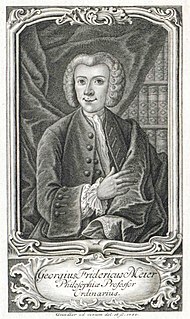 W
WGeorg Friedrich Meier was a German philosopher and aesthetician. A follower of Alexander Gottlieb Baumgarten, he reformed the philosophy of Christian Wolff by introducing elements of John Locke's empiricist theory of knowledge.
 W
WMetaphysical concepts relate to the ideas of transcendent and universal elements that surpass the human interactions. They aim to explore notions that humans have yet to comprehend, or have merely touched on in order to provide an understanding of what lies beyond the physical world. Aesthetics aims to explore questions relating to the natural world, beauty and art, and the intertwining of each. Therefore, in conjunction with metaphysical concepts, these two branches of philosophy explore the transformative and distinctiveness of art and what distinguishes something as art. These ideas highly conflicted with modern scientific knowledge as they were based on theories and concepts in comparison to reliable experiments that resulted in tangible or viewable proof. In relation to naturalism many philosophers such as John Dewey, Ernest Nagel and Sidney Hook are compelled to believe that only what is seen and touched or scientifically proven can be true, and in saying so, can be meaningful to humans.
 W
WModernism is both a philosophical movement and an art movement that arose from broad transformations in Western society during the late 19th and early 20th centuries. The movement reflected a desire for the creation of new forms of art, philosophy, and social organization which reflected the newly emerging industrial world, including features such as urbanization, new technologies, and war. Artists attempted to depart from traditional forms of art, which they considered outdated or obsolete. The poet Ezra Pound's 1934 injunction to "Make it New" was the touchstone of the movement's approach.
 W
WAesthetics of music is a branch of philosophy that deals with the nature of art, beauty and taste in music, and with the creation or appreciation of beauty in music. In the pre-modern tradition, the aesthetics of music or musical aesthetics explored the mathematical and cosmological dimensions of rhythmic and harmonic organization. In the eighteenth century, focus shifted to the experience of hearing music, and thus to questions about its beauty and human enjoyment of music. The origin of this philosophic shift is sometimes attributed to Baumgarten in the 18th century, followed by Kant.
 W
WNeuroesthetics is a relatively recent sub-discipline of empirical aesthetics. Empirical aesthetics takes a scientific approach to the study of aesthetic perceptions of art, music, or any object that can give rise to aesthetic judgments. Neuroesthetics is a term coined by Semir Zeki in 1999 and received its formal definition in 2002 as the scientific study of the neural bases for the contemplation and creation of a work of art. Neuroesthetics uses neuroscience to explain and understand the aesthetic experiences at the neurological level. The topic attracts scholars from many disciplines including neuroscientists, art historians, artists, art therapists and psychologists.
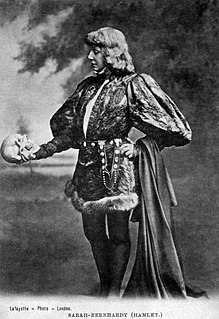 W
WThe paradox of fiction, or the paradox of emotional response to fiction, is a philosophical dilemma that questions how people can experience strong emotions to fictional things. The primary question asked is the following: How are people moved by things which do not exist? The paradox draws upon a set of three premises that seem to be true prima facie but upon closer inspection produce a contradiction. Although the ontology of fictional things in general has been discussed in philosophy since Plato, the paradox was first suggested by Colin Radford and Michael Weston in their 1975 paper How Can We Be Moved by the Fate of Anna Karenina?. Since Radford and Weston's original paper, they and others have continued the discussion by giving the problem slightly differing formulations and solutions.
 W
WParagone, was a debate from the Italian Renaissance in which painting and sculpture were each championed as superior to – and therefore distinct from – each other. While other art forms, such as architecture and poetry existed in the context of the debate, painting and sculpture were the two art forms that the debate was primarily focused on.
 W
WPoetry is a form of literature that uses aesthetic and often rhythmic qualities of language − such as phonaesthetics, sound symbolism, and metre − to evoke meanings in addition to, or in place of, a prosaic ostensible meaning.
 W
WRepresentation is the use of signs that stand in for and take the place of something else. It is through representation that people organize the world and reality through the act of naming its elements. Signs are arranged in order to form semantic constructions and express relations.
 W
WJohann Christoph Friedrich (von) Schiller was a German playwright, poet, and philosopher. During the last seventeen years of his life (1788–1805), Schiller developed a productive, if complicated, friendship with the already famous and influential Johann Wolfgang von Goethe. They frequently discussed issues concerning aesthetics, and Schiller encouraged Goethe to finish works that he had left as sketches. This relationship and these discussions led to a period now referred to as Weimar Classicism. They also worked together on Xenien, a collection of short satirical poems in which both Schiller and Goethe challenge opponents of their philosophical vision.
 W
WArthur Schopenhauer was a German philosopher. He is best known for his 1818 work The World as Will and Representation, which characterizes the phenomenal world as the product of a blind noumenal will. Building on the transcendental idealism of Immanuel Kant, Schopenhauer developed an atheistic metaphysical and ethical system that rejected the contemporaneous ideas of German idealism. He was among the first thinkers in Western philosophy to share and affirm significant tenets of Indian philosophy, such as asceticism, denial of the self, and the notion of the world-as-appearance. His work has been described as an exemplary manifestation of philosophical pessimism.
 W
WArthur Schopenhauer's aesthetics result from his philosophical doctrine of the primacy of the metaphysical Will as the Kantian thing-in-itself, the ground of life and all being. In his chief work, The World as Will and Representation, Schopenhauer thought that if consciousness or attention is fully engrossed, absorbed, or occupied with the world as painless representations or images, then there is no consciousness of the world as painful willing. Aesthetic contemplation of a work of art provides just such a state—a temporary liberation from the suffering that results from enslavement to the will [need, craving, urge, striving] by becoming a will-less spectator of "the world as representation" [mental image or idea]. Art, according to Schopenhauer, also provides essential knowledge of the world's objects in a way that is more profound than science or everyday experience.
 W
WSensoaesthetics is the application of scientific methods to the study of the aesthetic, sensual and emotional aspects of materials.
 W
WSexual selection in humans concerns the concept of sexual selection, introduced by Charles Darwin as an element of his theory of natural selection, as it affects humans. Sexual selection is a biological way one sex chooses a mate for the best reproductive success. Most compete with others of the same sex for the best mate to contribute their genome for future generations. This has shaped our evolution for many years, but reasons why humans choose their mates are hardly understood. Sexual selection is quite different in non-human animals than humans as they feel more of the evolutionary pressures to reproduce and can easily reject a mate. The role of sexual selection in human evolution has not been firmly established although neoteny has been cited as being caused by human sexual selection. It has been suggested that sexual selection played a part in the evolution of the anatomically modern human brain, i.e. the structures responsible for social intelligence underwent positive selection as a sexual ornamentation to be used in courtship rather than for survival itself, and that it has developed in ways outlined by Ronald Fisher in the Fisherian runaway model. Fisher also stated that the development of sexual selection was "more favourable" in humans.
 W
WCharles Leslie Stevenson was an American analytic philosopher best known for his work in ethics and aesthetics.
 W
WSymmetry in everyday language refers to a sense of harmonious and beautiful proportion and balance. In mathematics, "symmetry" has a more precise definition, and is usually used to refer to an object that is invariant under some transformations; including translation, reflection, rotation or scaling. Although these two meanings of "symmetry" can sometimes be told apart, they are intricately related, and hence are discussed together in this article.
 W
WThe uncanny is the psychological experience of something as strangely familiar, rather than simply mysterious. It may describe incidents where a familiar thing or event is encountered in an unsettling, eerie, or taboo context.
 W
WViolence in art refers to depictions of violence in high culture art as well as popular culture such as cinema and theater. It has been the subject of considerable controversy and debate for centuries. In Western art, graphic depictions of the Passion of Christ have long been portrayed, as have a wide range of depictions of warfare by later painters and graphic artists. Theater and, in modern times, cinema have often featured battles and violent crimes. Similarly, images and descriptions of violence have historically been significant features in literature. Margaret Bruder, a film studies professor at Indiana University, states that the aestheticization of violence in film is the depiction of violence in a "stylistically excessive", "significant and sustained way". Aestheticized violence differs from gratuitous violence in that it is used as a stylistic element, and through the "play of images and signs" references artworks, genre conventions, cultural symbols, or concepts